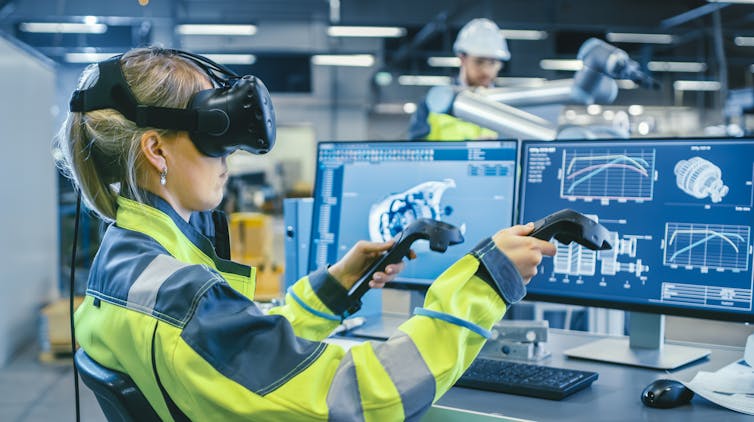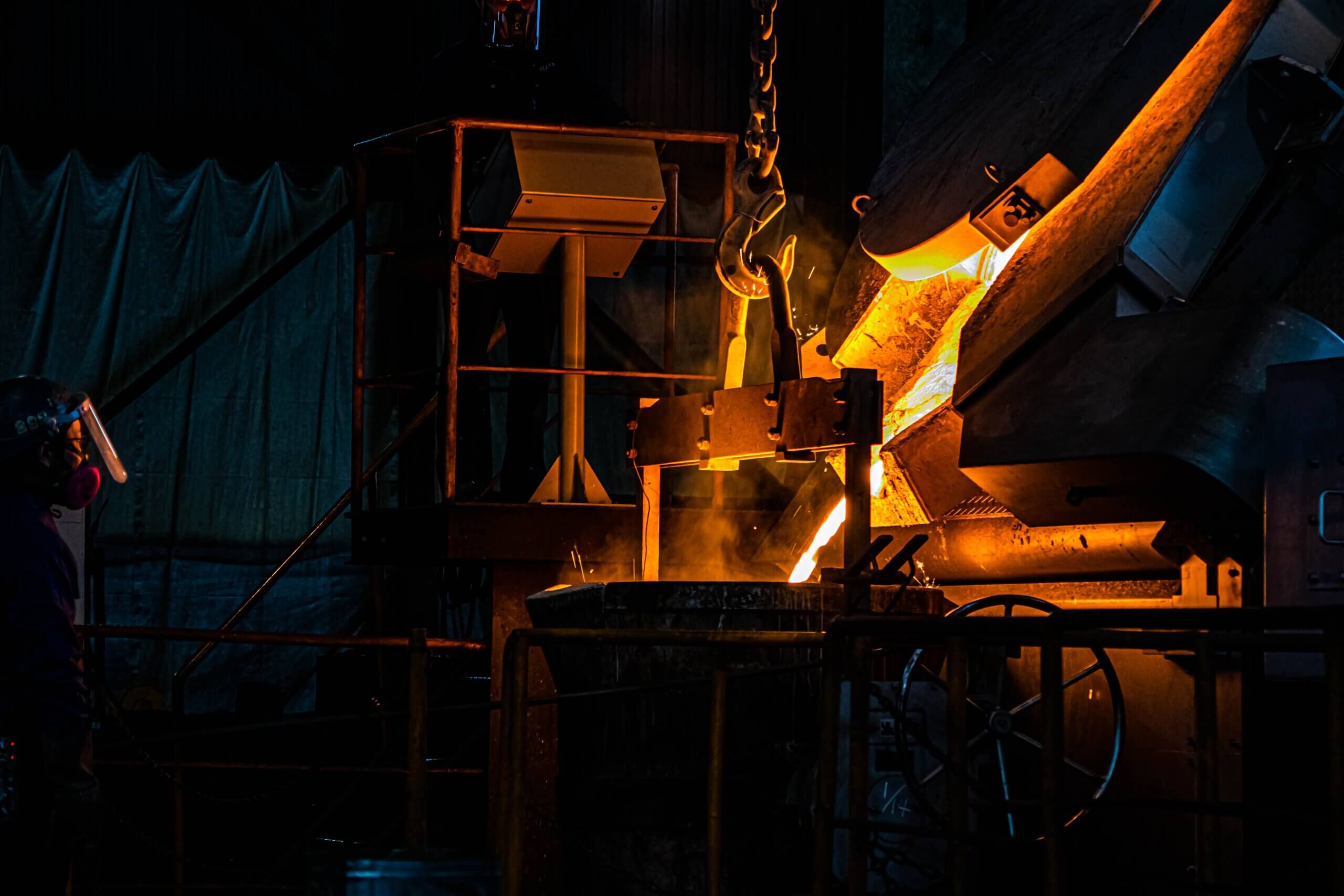Key Takeaway:
The fourth industrial revolution is a way of connecting together advanced technologies to transform how we make things, but many companies have been slow to take advantage of it. Searches for “industry 4.0” have dropped due to lack of awareness, high risk and scrutiny, and resistance to change among workers. Industry 4.0 technologies have a role to play in rethinking global supply chains, such as driverless forklifts, additive manufacturing, and digital platforms, to reduce labour costs and track inventory.
It’s nearly a decade since the term “fourth industrial revolution” was coined, yet many people won’t have heard of it, or know what it refers to.
Also known as industry 4.0, it’s a way of describing how connecting together different advanced technologies could transform how we make things. An example of this could be putting artificial intelligence (AI) into factory robots.
Although there’s no formal agreement we are living through this new age, it’s a sign of the importance with which many people regard these developments and their potential. The previous industrial revolutions were: the rise of steam powerin the late 18th century, the use of electricity to power machines at the end of the 19th century and the shift to digital electronics that started in the 1970s.
These were defined by clear milestones. But many emerging technologies could claim to be part of industry 4.0. These include virtual reality (VR) to simulate what’s going on in an assembly line, and 3D printing. There are also lesser known developments such as digital twins – virtual models that accurately reflect the behaviour of physical objects such as wind turbines or aircraft engines.
Any technology that is “smart” or “cyber-physical” — where the lines between the digital and physical worlds are blurred — can claim to be part of the fourth industrial revolution.
But many companies appear to have been slow to take advantage of these developments. Here, we’ll show why that could be and the changes that may be necessary to ensure that transformative technologies live up to their potential.
A stalled revolution?
A supply chain describes the entire system for producing a product, from raw materials to delivering the finished article to a consumer. So it’s useful to look at the impact industry 4.0 technologies have had on these chains.
It’s difficult to measure how much of an effect specific technologies might be having on the economy. However, one thing we can do is see what impact they have made on decision makers in companies.
One of us (Ralf Seifert) recently published a survey of several hundred senior executives conducted. The survey asked the executives their views on managing supply chains.
None of the top priorities listed by the executives relate to industry 4.0. Headline-grabbing technologies strongly associated with the fourth industrial revolution, such as AI and machine learning, the internet of things, robotics and 3D printing are in the bottom third of priorities.
A look at online trends also reveals that searches for “industry 4.0” peaked in 2019, but have since dropped to a significantly lower level.

There could be a number of potential reasons for this disappointing embrace of industry 4.0 by companies. In 2020, a survey by the accounting giant KPMGshowed that, of all industry 4.0 technologies, only cloud computing had reached an advanced — though still incomplete — level of implementation.
For many businesses, the benefits of other important technologies remain obscure. The daily pressures of service and cost take precedent, so it takes effort to move away from familiar solutions. This is consistent with the dip in searches for industry 4.0 — even as global supply chains have been disrupted by the coronavirus pandemic, the blockage of the Suez Canal shipping lane in 2021, floods hampering rail transport and a shortage of shipping containers.
The KPMG report from 2020 found that less than half of business leaders had a good understanding of the term “fourth industrial revolution”.
High risk, high scrutiny
A lack of awareness is one hurdle for the adoption of industry 4.0 technologies. Another is the need to build the business case for expenditure on new technological solutions.
The more ambitious the technology, the higher the risk and scrutiny. Not every company has leaders ready to champion and sponsor innovation in the face of uncertain or less tangible outcomes.

Industry 4.0 initiatives can also lead to resistance to change among workers. IT departments, trained for years to seek out large enterprise solution providers, hesitate to recommend niche solutions from small companies — especially for technologies they’re not familiar with.
One way to address this is to commit resources to building separate teams tasked with identifying and prioritising industry 4.0 capabilities. Even then, however, there must be an alignment with the broader business strategies of a company.
From crisis to opportunity
The unprecedented supply chain disruptions over the last two years have pushed executives to consider reconfiguring their supply chains. More often than not, however, they are opting to do this in a conventional manner.
Reshoring (returning manufacturing to the company’s original country) and nearshoring (transferring manufacturing to a closer-by, rather than more distant, country) have become popular options for companies looking to build the resilience of their supply chains.
Industry 4.0 technologies have a role to play in this transition. For example, the rethinking of global supply chains came about through a need to reduce labour costs.
Driverless forklifts, or automated guided vehicles (AGVs), are one example of the way robotics can mitigate rising costs elsewhere. Additive manufacturing — the industrial name for 3D printing — can simplify and reduce the cost of production processes that involve two or more costly steps.
For supply chains that cross international borders, there will be an added incentive to use digital platforms for improving the ability to track inventory — a term covering everything from raw materials to finished products — and to help transport goods. This will help companies identify unplanned disruptions more quickly and react to them appropriately.
The very supply chain dysfunctions that made headlines and arguably slowed the short-term progress of industry 4.0 may yet prove to be the engine that finally delivers its promise.





























